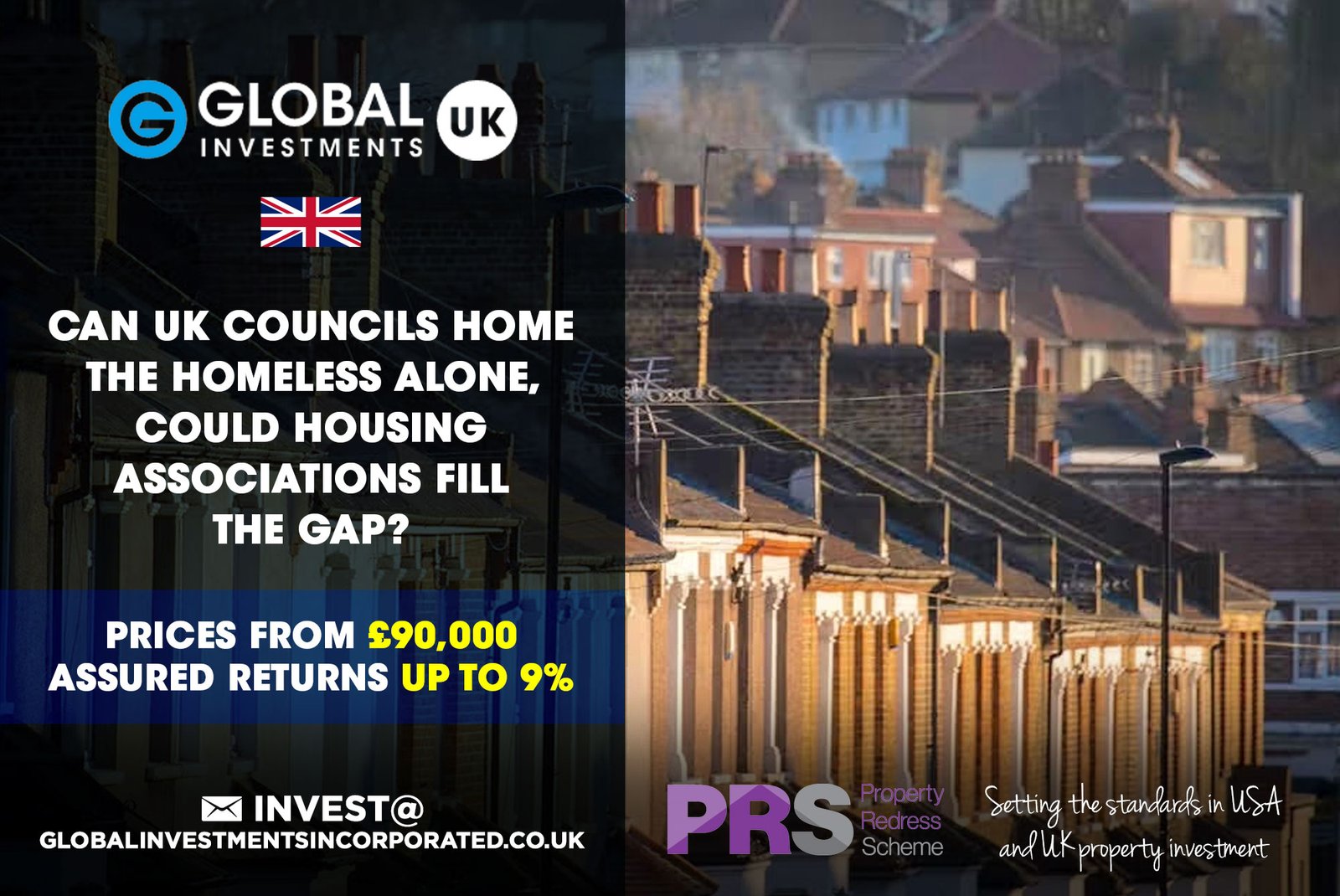
Can UK Councils Home the Homeless alone, could Housing Associations fill the gap ?
The effectiveness of UK councils in housing homeless individuals can vary widely depending on several factors, including local policies, funding availability, resources, and the specific approach taken by each council. While some councils may excel in providing support and housing options for homeless individuals, others might face challenges that hinder their ability to effectively address homelessness. The UK government has made efforts to address homelessness through various initiatives, such as the Homelessness Reduction Act 2017, which places more emphasis on prevention and support for those at risk of becoming homeless. Additionally, there have been programs aimed at providing temporary accommodation and support services for homeless individuals. However, there have been reports of overcrowded and inadequate temporary accommodations, long waiting lists for social housing, and budget constraints that impact the ability of some councils to effectively house homeless individuals. Moreover, the causes of homelessness are complex and often interconnected, including issues like poverty, mental health, addiction, and lack of affordable housing, which can make it challenging for councils to address the root causes of homelessness. It’s important to note that the situation can change over time and from one location to another within the UK. Some councils may have more successful programs and resources dedicated to tackling homelessness, while others may struggle due to various reasons. Public opinion on how well councils are doing in addressing homelessness can also vary based on individual experiences and perspectives. If you’re interested in the status of how UK councils are handling homelessness, I recommend looking up recent reports, studies, and news articles that provide insights into specific council efforts and outcomes related to homelessness in different regions of the UK. Housing associations can play a significant role in addressing the housing crisis in the UK, but they are one part of a broader solution that requires collaboration between various stakeholders, including governments, local authorities, private developers, and social organizations. Housing associations are non-profit organizations that provide affordable housing and support services to a wide range of people, including those on lower incomes, key workers, and vulnerable populations. There are some ways in which housing associations can contribute to solving the housing crisis. Housing associations often focus on building and managing affordable housing units that cater to individuals and families who might not be able to afford market-rate housing. By offering affordable options, they help address the gap between housing demand and supply. Many housing associations provide social housing, which is rented housing typically provided by the government or non-profit organizations to those in need. This type of housing helps support individuals and families with lower incomes. Housing associations can develop mixed-income housing projects that include a combination of market-rate, affordable, and social housing units. This approach promotes social integration and reduces the concentration of poverty. Housing associations often offer additional support services to residents, such as employment assistance, education and training programs, and community-building initiatives. These services can help residents improve their overall quality of life and work towards long-term stability. Housing associations can be at the forefront of innovative housing design and sustainable building practices, helping to create housing that is not only affordable but also environmentally friendly and energy efficient. Collaborating with local governments, private developers, and community organizations allows housing associations to pool resources, share expertise, and create comprehensive solutions that address various aspects of the housing crisis. Housing associations can work on preventing homelessness by providing transitional housing and support for individuals at risk of becoming homeless. While housing associations have a role to play, it’s important to note that the housing crisis is a complex issue with multiple underlying causes, including housing supply shortages, affordability challenges, economic disparities, and more. Addressing the crisis requires a multi-faceted approach that involves policy changes, increased funding, land use reforms, and coordinated efforts among various stakeholders. Ultimately, housing associations can contribute significantly to alleviating the housing crisis in the UK, but their impact will be most effective when combined with broader systemic changes and strategic partnerships across the housing sector. Here at Global we and our partners work with Housing associations who take tenancies in our investors properties providing a long term net income with no voids to the investors and homes for those who maybe homeless without this opportunity.

